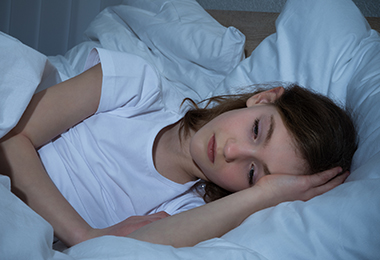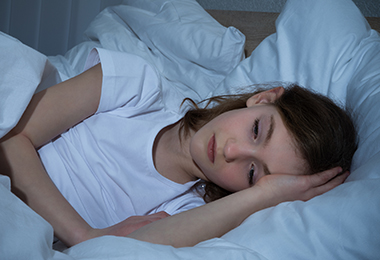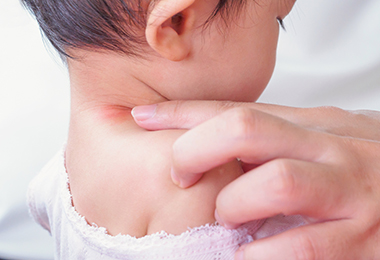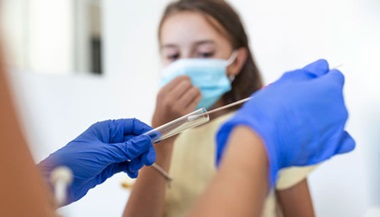Sinusitis in Children
What are sinuses?
The sinuses are cavities, or air-filled spaces, near the nasal passage. Like the nasal passage, the sinuses are lined with mucous membranes. There are four different types of sinuses:
-
Ethmoid sinus. Located inside the face, around the area of the bridge of the nose. This sinus is present at birth, and continues to grow.
-
Maxillary sinus. Located inside the face, around the area of the cheeks. This sinus is also present at birth, and continues to grow.
-
Frontal sinus. Located inside the face, in the area of the forehead. This sinus does not develop until around 7 years of age.
-
Sphenoid sinus. Located deep in the face, behind the nose. This sinus does not develop until adolescence.
How the Sinuses Work
A basic knowledge of the anatomy and physiology of the nose and sinuses is necessary to understand nasal and sinus disorders.
The nose and sinuses are a part of the upper respiratory tract. The three-dimensional anatomy of this area is complex. The function of the nose in addition to smell is to warm, humidify and filter air that passes through it. The external nose consists of a bony and cartilaginous framework. The nostrils, or anterior nares, form the external opening to the nose. The nasal septum is a midline internal structure that separates the left and right nasal cavities. It is composed of cartilage and bone. A deviated nasal septum can cause nasal obstruction.
There are four sets of paired sinuses. The maxillary sinuses are located beneath the cheeks and under the eyes. The frontal sinuses are above the eyes behind the forehead. The ethmoid sinuses are honeycomb-shaped sinuses located between the eyes, and the sphenoid sinuses are located behind the nose and below the brain. Each of these sinuses is an enclosed space that drains through an ostium, or opening, into the nose. The sinuses are lined by mucosa that is similar to the lining of the nose. These ostia can become blocked by inflammation or swelling of the mucosa as well as by tumors or bony structures.
The lateral nasal wall internally contains the three turbinate bones. These scroll-like structures are covered in a mucous membrane that contains vascular channels that can swell under certain conditions, such as allergy or inflammation. The tear duct or nasolacrimal duct drains tears from the eyes into the nose where it enters beneath the inferior turbinate. Blockage of this duct from injury or disease causes excess tearing of the eye, or epiphora. The middle meatus is a space under the middle turbinate. Within the middle meatus is the osteomeatal complex, which is the common pathway for the drainage of the maxillary (cheek) sinus, frontal (forehead) sinus and anterior ethmoid sinus. Inflammation or swelling of these key areas may cause blockage of the sinuses.
The superior turbinate is a small structure located high in the nose. Behind the superior turbinate is the opening of the sphenoid sinus, located near the back portion of the septum. The pituitary gland is located directly above and behind the sphenoid sinus. Pituitary surgery is performed through the sphenoid sinus.
What is sinusitis?
Sinusitis is an infection of the sinuses near the nose. These infections usually occur after a cold or after an allergic inflammation. There are four types of sinusitis:
-
Acute. Symptoms of this type of infection last less than four weeks and get better with the appropriate treatment.
-
Subacute. This type of infection does not get better with treatment initially, and symptoms last 4 to 12 weeks.
-
Chronic. This type of infection happens with repeated acute infections or with previous infections that were inadequately treated. These symptoms last 12 weeks or longer.
-
Recurrent acute. Four or more episodes of acute sinusitis a year.
What causes sinusitis?
Sometimes, a sinus infection happens after an upper respiratory infection (URI) or common cold. The URI causes inflammation of the nasal passages that can block the opening of the paranasal sinuses, and result in a sinus infection. Allergies can also lead to sinusitis because of the swelling of the nasal tissue and increased production of mucus. There are other possible conditions that can block the normal flow of secretions out of the sinuses and can lead to sinusitis including the following:
-
Abnormalities in the structure of the nose
-
Infections from a tooth
-
Trauma to the nose
-
Foreign objects stuck in the nose
-
Cleft palate
-
Gastroesophageal reflux disease (GERD)
When the flow of secretions from the sinuses is blocked, bacteria may begin to grow. This leads to a sinus infection, or sinusitis. The most common bacteria that cause acute sinusitis include the following:
-
Streptococcus pneumonia
-
Haemophilus influenzae
-
Moraxella catarrhalis
Treatment for chronic sinusitis must be aimed at different bacteria, such as pseudomonas (gram-negative rods), because there are more often the culprit.
What are the symptoms of sinusitis?
The symptoms of sinusitis depend greatly on the age of the child. The following are the most common symptoms of sinusitis. However, each child may experience symptoms differently. Symptoms may include:
Younger children
-
Runny nose
-
Lasts longer than seven to 10 days
-
Discharge is usually thick green or yellow, but can be clear
-
-
Nighttime cough
-
Occasional daytime cough
-
Swelling around the eyes
-
Usually no headaches younger than 5 years of age
Older children and adults
-
Runny nose or cold symptoms lasting longer than seven to 10 days
-
Drip in the throat from the nose
-
Headaches*
-
Facial discomfort
-
Bad breath
-
Cough
-
Fever
-
Sore throat
-
Swelling around the eye, often worse in the morning
The symptoms of sinusitis may resemble other conditions or medical problems. Always see your child's health care provider for a diagnosis.
*One 2002 study has found that nine out of 10 physician-diagnosed or self-described sinus headaches are actually migraine-related. The researchers found that the participants described the classic symptoms of pain in the front of the face and pressure under the eyes. However, the participants lacked other symptoms of a true sinus infection, including yellow or green discharge and fever. In addition, not every migraine has telltale symptoms of nausea, vomiting, and sensitivity to light. Always see your child's health care provider for a diagnosis.
How is sinusitis diagnosed?
Generally, your child's health care provider can diagnose sinusitis based on your child's symptoms and physical examination. In some cases additional tests may be performed to confirm the diagnosis. These may include:
-
Sinus X-rays. Diagnostic test which uses invisible electromagnetic energy beams to produce images of internal tissues, bones, and organs onto film. (X-rays are not typically used, but may help assist in the diagnosis.)
-
Computed tomography (also called CT or CAT scan). A diagnostic imaging procedure that uses a combination of X-rays and computer technology to produce horizontal, or axial, images (often called slices) of the body. A CT scan shows detailed images of any part of the body, including the bones, muscles, fat, and organs. CT scans are more detailed than general X-rays.
Your doctor may perform this procedure:
- If treatment for sinusitis has been effective
- If surgery is needed
- If your child has experienced any complications due to sinusitis
-
Cultures from the sinuses. Laboratory tests that involve the growing of bacteria or other microorganisms to aid in diagnosis.
What is the treatment for sinusitis?
Specific treatment for sinusitis will be determined by your child's health care provider based on:
-
Your child's age, overall health, and medical history
-
How sick he or she is
-
Your child's tolerance for specific medications, procedures, or therapies
-
How long the condition is expected to last
-
Your opinion or preference
Treatment of sinusitis may include the following:
-
Antibiotics, as determined by your child's physician (antibiotics are usually given for at least 14 days)
-
Acetaminophen (for pain or discomfort)
-
A decongestant (for instance, pseudoephedrine [Sudafed] and/or mucus thinner such as guaifenesin [Robitussin])
-
Cool humidifier in your child's room
-
Nasal spray to reduce inflammation
-
Medications to treat GERD
-
Surgery to remove the adenoids
-
Endoscopic sinus surgery
Antibiotics may not be given for the first 10 to 14 days, unless severe symptoms develop, such as: fever, facial pain or tenderness, or swelling around the eye. Surgery should be considered only if other treatments have failed.
You may need to take your child to an allergist/immunologist, particularly if he or she has chronic or recurrent sinusitis or has had sinus surgery, but still experience sinusitis.
Antihistamines do not help the symptoms of sinusitis unless it is caused by an allergy.
Pediatric Otolaryngology
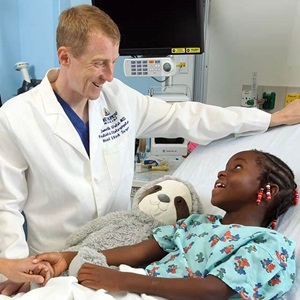
Our pediatric otolaryngologists provide compassionate and comprehensive care for children with common and rare ear, nose, and throat conditions. As part of the Johns Hopkins Children's Center, you have access to all the specialized resources of a children's hospital.


